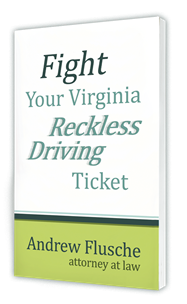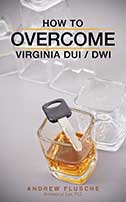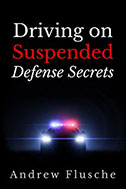Move Over or Slow Down – Failure to Yield to Vehicles
UPDATE The below content is out of date. As of 2023, Virginia has a move-over law that applies to ALL vehicles with flashing lights. That code section is now 46.2-861.1.
Virginia’s relatively new “move over law” (46.2-921.1) was changed significantly in 2010. Even before the changes, people were confused about what the law requires. Here’s an explanation of the law and its punishments.
In brief
You may have heard the law described as “move over or slow down” for emergency vehicles. That’s a crude summary that isn’t accurate, especially in light of the recent changes. Primarily, the law now applies to most vehicles on the side of the road with illuminated red, blue, or amber lights.
The safe rule if you see a vehicle on the side of the road with those lights is to change lanes to provide an open lane next to that vehicle.
The actual law
The move over law is codified in Virginia Code 46.2-921.1. The key language that describes the violation is in subsection A:
The driver of any motor vehicle, upon approaching a stationary vehicle that is displaying a flashing, blinking, or alternating blue, red, or amber light or lights as provided in § 46.2-1022, 46.2-1023, or 46.2-1024 or subdivision A 1 or A 2 of § 46.2-1025 shall (i) on a highway having at least four lanes, at least two of which are intended for traffic proceeding as the approaching vehicle, proceed with caution and, if reasonable, with due regard for safety and traffic conditions, yield the right-of-way by making a lane change into a lane not adjacent to the stationary vehicle or (ii) if changing lanes would be unreasonable or unsafe, proceed with due caution and maintain a safe speed for highway conditions.
What does all that mean? Let’s break it down. The basic required elements of the offense are (keep in mind this is a summary only):
- A person driving a motor vehicle
- Approaching a
- Stationary vehicle of certain types:
- Law enforcement, Virginia National Guard, etc (46.2-1022)
- Fire truck, ambulance, game warden, etc (46.2-1023)
- A private vehicle owned by a fireman, rescue squad volunteer, or police chaplain (46.2-1024)
- Tow truck or maintenance vehicle (46.2-1025(A)(1))
- Highway or utility construction vehicle (46.2-1025(A)(2))
- That is displaying flashing, blinking, or alternating red, blue, or amber lights
If you’re driving along and see one of those vehicles displaying the appropriate lights, you need to take action. But what action? That comes next.
The law has two different requirements. The first one only applies on highways with at least two lanes traveling in each direction. In that case, you must “proceed with caution.” And only “if reasonable,” considering safety and traffic conditions, you must change lanes away from the stationary vehicle.
The second requirement applies to all drivers, including people on four-lane highways. Everyone must “proceed with due caution” and keep a safe speed considering the highway conditions.
Notice that the law doesn’t actually say “slow down.” And not everyone has to move over. But the safe rule is to move over if possible. If you can’t do that, slow down a bit.
Penalties
One of the new 2010 changes to this law is the penalty. Until this year, any violation was a class 1 misdemeanor. That means jail time was technically a possibility.
Now, a first offense of failing to yield to a stationary emergency or other lighted vehicle is simply a traffic infraction. The maximum fine would be $250.
If you have been previously convicted of one or more violations of this statute, IF your new violation involves a vehicle with red or blue lights, the new violation is a class 1 misdemeanor. That makes the violation a crime, which is punished with a maximum of 12 months in jail and/or a fine up to $2,500.
License suspension?
Aside from fines and possible jail time, violations of this failure to yield statute can result in license suspension. But suspension is only allowed if there is actual property damage, injury, or death. The maximum possible suspension depends upon what happened:
- Property damage to someone else’s property – 1 year
- Injury to or death of someone else – 2 years
Rule of thumb
What should the average driver take away from this? If you see lights on the side of the road, try to change lanes to provide an open lane next to the vehicle. If that’s not possible, slow down some.
What should you do if you’re charged with failing to yield to a stationary vehicle (or failing to “move over or slow down”)? Consult an attorney.
Even though a first offense is not a misdemeanor, there are lots of possible defense angles in this statute. It’s very specific as to what vehicles trigger the law and what exactly drivers have to do. There may be a solid defense on the facts of your case. Even if that’s not possible, we might be able to get the charge dismissed with driving school.




